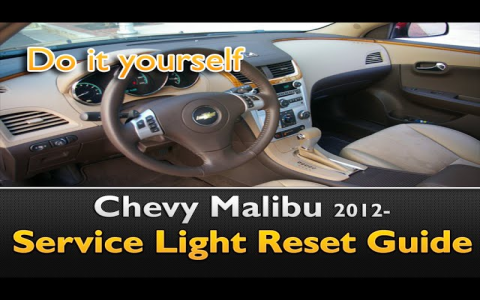Facing warning lights on your Chevrolet Malibu dashboard doesn't necessitate expensive dealership visits. Here are affordable diagnostic and repair solutions:
Common Causes & Budget-Friendly Fixes
- TPMS (Tire Pressure Monitoring System): Most common warning. Check tire pressure (including spare if applicable), adjust to recommended PSI (found on driver's door jamb sticker) using a standard tire gauge. Often resolves after driving a few miles. If light persists, one sensor battery (around $15-$50 per wheel + installation/programming) may be failing.
- Oil Pressure Light: STOP DRIVING IMMEDIATELY. Check oil level with engine off, on level ground using dipstick. Top up with correct viscosity oil (around $20-$50). If level is adequate or light stays on after top-up, suspect faulty oil pressure sensor ($30-$100 + labor) or serious engine issues requiring diagnosis.
- Check Engine Light (CEL): Vast range of causes. First Step: Borrow a basic OBD-II scanner (often free at auto parts stores) or purchase an affordable one ($20-$50). Read codes (e.g., P0420, P0171). Common affordable fixes:
- Loose Fuel Cap: Tighten securely or replace cap ($10-$25).
- Failing Oxygen Sensor: Bank 1 Sensor 2 replacements often cheaper ($50-$150 + DIY possible).
- Spark Plugs/Wires: Replace worn plugs/coils ($20-$80 per coil/plug + DIY possible).
- Mass Air Flow Sensor (MAF): Carefully clean with MAF-specific spray ($10). Replace if necessary ($50-$150).
- ABS / Traction Control Lights: Frequently linked. Common causes:
- Wheel Speed Sensor: Check wires for damage near each wheel hub. Sensor replacement ($25-$100 per sensor + labor) is less costly than full ABS module repair.
- Low Brake Fluid: Check reservoir level, top up with DOT 3/4 fluid ($10). If persistently low, inspect for leaks in lines, calipers, or master cylinder.
- Battery/Charging System Warning:
- Test battery voltage (free at auto parts stores). Weak batteries ($100-$200) are common cause.
- Check battery terminals for corrosion - clean thoroughly (baking soda/water mix, wire brush).
- Ensure alternator belt is intact and tensioned. Alt failure less common but requires testing.
- Airbag/SRS Light: Often caused by:
- Under-seat wiring harness connectors (driver/passenger) becoming loose. Carefully unplug, clean contacts with electrical contact cleaner, reconnect firmly.
- Faulty clock spring behind steering wheel (requires more complex repair). Professional diagnosis recommended for safety systems.
Smart Diagnostic Approach Saves Money
- Use an OBD-II Scanner: Essential for CEL and many other systems. Pinpoints specific circuits/sensors for targeted troubleshooting.
- Visual Inspection First: Check fluid levels, obvious leaks, damaged wires, tire pressure yourself – zero cost.
- Search Specific Codes: Use the exact trouble code (e.g., "Chevy Malibu P0442 fix") for model-specific solutions and common affordable fixes.
- Reset After Minor Fixes: Clear codes using scanner or disconnect battery (may require radio code) after repairs like tightening fuel cap. Light should stay off if fixed.
- Independent Shops vs. Dealer: Reputable independent mechanics often charge significantly less for labor ($85-$120/hr vs $140+) and can install quality aftermarket parts.
Critical Considerations
- Color Matters: Red warnings (Oil Pressure, Brake, Temperature) indicate immediate danger. Pull over safely. Yellow/Orange warnings require prompt attention but aren't necessarily immediate stop-driving emergencies.
- Diagnose Before Replacing: Don't guess! Use scanner codes and systematic troubleshooting to avoid unnecessary part replacement costs.
- DIY Skill Level: Be honest about your abilities. Some tasks are simple, others require specialized tools/knowledge. A botched DIY can cost more.
- Safety Systems: Never disable or ignore warnings like ABS or Airbags. Prioritize professional diagnosis for these critical systems.

